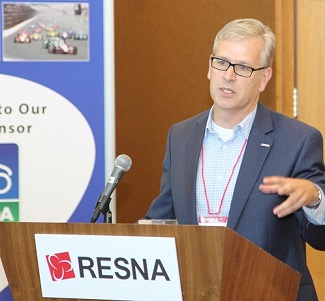Date: Friday, September 18, 2015
Category: Blog

Editor's Note: The following article appeared in the Media Planet Assistive Technology supplement, distributed through USA Today in select markets on September 25, 2015. We appreciate your comments and feedback.
Twenty-five years since the Americans with Disabilities Act, those of us in the disability and technology communities find ourselves on the forefront of a new frontier.
Assistive technology professionals that work in the field, including rehabilitation engineers, therapists and others, have noticed a growing number of people who do not consider themselves as having a disability using technologies that could be considered “assistive.”
Think of curb cuts, now in practically every American community. Curb cuts were designed with wheelchair users in mind but are also used by parents pushing baby strollers, kids on scooters, and travelers with roller suitcases. Go to any gym and you’ll see almost every TV is using closed captioning. Then there’s voice activation technologies, now on every smartphone, which started as a technology for people with disabilities who needed another way to access their devices, and is proving to have value to people without disabilities as well.
There’s considerable interest in technologies that allow aging parents to stay in their homes, help employees with a temporary disability continue to work, and make daily tasks easier for people with chronic conditions. Because technology is now a part of everyday life, there’s rising consumer demand for “accessible” technology – i.e., technology that anyone can use - in phones, laptops, tablets, and other tools.
What’s now and what’s next? Most immediately, look for eye-gaze technologies, more wearables such as Smartwatches, exoskeletons, and 3D printed products, as well as an emphasis on universal design and accessibility in everything, from physical buildings to web apps to kitchen appliances.
We will need to continue to fight to ensure that everyone, regardless of income, has access to assistive technology. Assistive technology professionals will need to continue to promote best practices, including user-centered design and research findings that “bridge the gap” between off-the-shelf technologies and actual, everyday use.
We can be certain of two things: technology will evolve and change, and what’s coming holds great promise for a more inclusive society that values everyone’s abilities.
Michael J. Brogioli, Executive Director, RESNA
September 25, 2015